
Given how many incredible builds we’ve covered over the last couple of years, we knew that an official Cyberdeck Contest would certainly receive some impressive entries. But never in our wildest dreams could we have predicted that more than 100 decks would end up crossing the finish line, or that of them, the vast majority would be never-before-seen designs. In fact, the response to this contest was so overwhelming that the judging process took far longer than we originally anticipated.
Ultimately, we decided that there were simply too many phenomenal builds entered into the contest to award $150 Digikey spending sprees to just three of them. So as an added bonus, we’ve rustled up some $50 Tindie gift certificates that will go to the four special category honorable mentions.
With that, let’s take a look at the cyberdecks that took top honors as decided by our panel of judges.
First Place: Hosaka MK I
In terms of fit and finish, the Hosaka MK I built by [Chris] is so far ahead of the competition that you’d be excused for thinking it dropped into our reality through some tear in the fabric of space and time. It’s completely believable as a piece of equipment from the future, and could easily pass for a high-end movie prop.
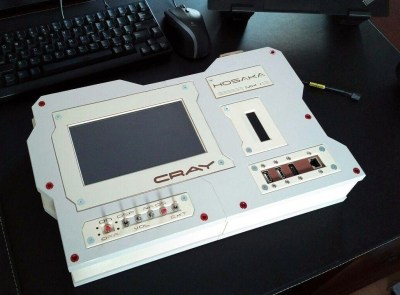
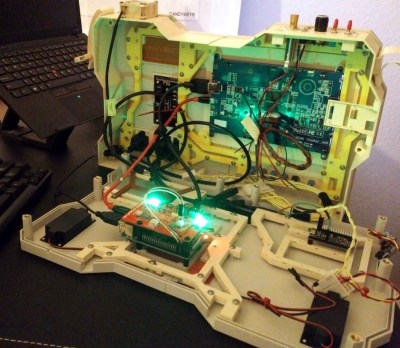
[Chris] says this build is a tribute to William Gibson and his work, and while the man himself has said that he didn’t have a strong idea of what a cyberdeck should actually look like back when he wrote Neuromancer, there’s no question that the Hosaka MK I has embraced the best of the cyberpunk aesthetic his novels helped create.
But of course, looks will only get you so far. What really puts the Hosaka MK I over the top is the excellent documentation, as [Chris] made sure to include plenty of internal photos and build details. He’s even provided a complete Bill of Materials and FreeCAD design files for his deck, should anyone wish to spin up their own version.
Second Place: Cyberdeck Red
While the Hosaka MK I may have been the beauty in this competition, you could argue that the Cyberdeck Red built by [Gabriel] represents the brains. This deck packs in an impressive amount of hardware while still remaining portable, and even though all the bells and whistles lead to a rather incongruous outer appearance, we’d wager many a hacker would feel its worth the trade.
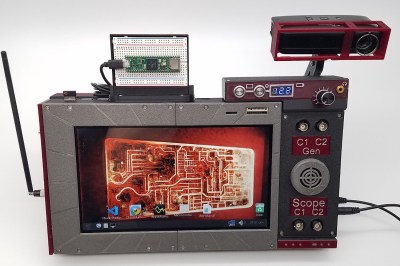
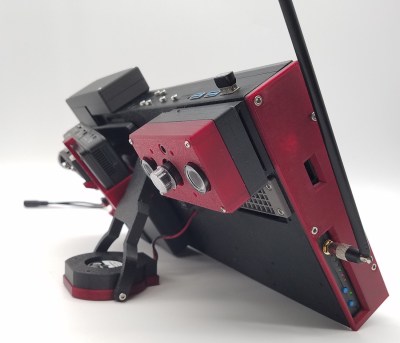
Beyond the Raspberry Pi 4 and 10-inch display at the heart of the Cyberdeck Red, you’ll also find an Analog Discovery 2; a USB oscilloscope and logic analyzer that features a function generator and dual programmable power supplies. There’s also an integrated Great Scott Hack RF One, and a small projector on an articulated mount that lets you turn any wall into a huge display for hacking on the go. We especially liked the magnetically-attached breadboards for impromptu prototyping, and the small drawer built into the front of the deck for holding all the little bits and pieces a hardware hacker would want to bring along on their adventures.
Third Place: ComputeDeck-B3
Rounding out the top winners is this sleek wearable from [atltvhead]. While many of the other decks in this competition look like they’re either from the far future or an alternate version of our past, the ComputeDeck-B3 looks remarkably contemporary. In fact, it’s downright normal looking in comparison.
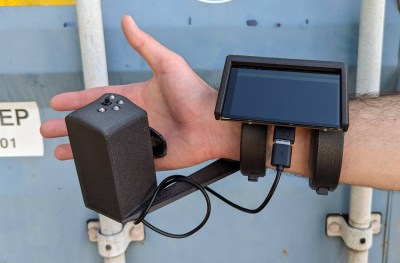
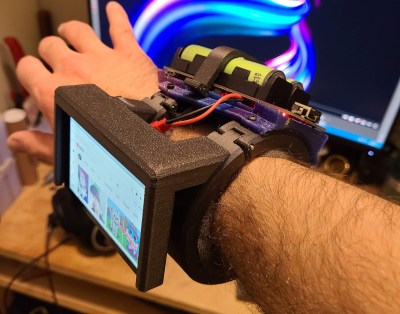
Featuring a unique single-handed chorded keyboard, the ComputeDeck-B3 may well be one of the most practical builds submitted to the 2022 Cyberdeck Contest. Had it been entered during an adaptive technology contest, we probably wouldn’t have batted an eye. We could even imagine somebody using it to keep track of the inventory in a massive warehouse some place.
Now, that might all sound a bit dull. But in fact, that’s sort of the point. This build shows that a custom computer doesn’t need to look like the traditional laptop to be functional for day-to-day tasks — and makes us excited to see where a future filled with bespoke computing devices might take us.
Honorable Mentions
Each of the three winners above will be awarded the $150 in store credit from Digi-Key, but after seeing how many incredible builds were submitted, we decided to sweeten the pot for the projects that best fit a few special categories. Each of these projects will receive $50 gift cards from Tindie.
Post-Apocalyptic Cobbledeck
You can’t count on Amazon Prime in a cyberpunk dystopia, so you should be prepared to build your deck out of whatever parts you can find laying around. If you’re looking for an example of this eclectic style of construction, the IP00-minus from [Rob] is about as perfect as they come.
This wearable is, quite literally, a ball of modules and components held together with wires and leather straps. But don’t be fooled by its haphazard appearance, the IP00-minus is a fully functional smartwatch that includes a number of unique features that you wouldn’t expect, such as PM2.5 particle counter to report on local air quality.
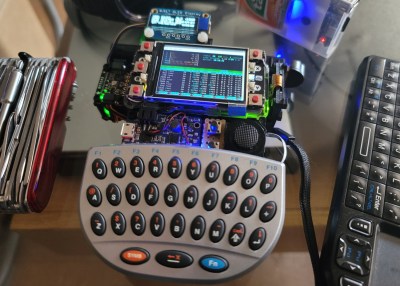
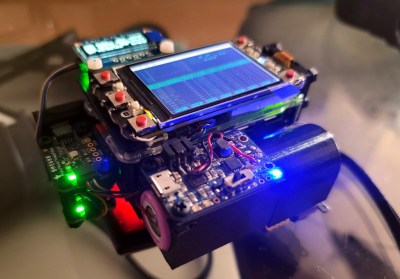
We were also very impressed with the Mini-Deck from [Smeef]. On the surface you might think this build has the same freewheeling style as the IP00-minus, but on closer inspection you can see its reserved enough to include some clever design elements like using an 18650 cell as both a power source and a hinge pin to fold itself around. A BME688 sensor lets it pull in plenty of environmental data, and the Raspberry Pi Zero 2 W combined with a salvaged mini USB keyboard should let you get some real work done despite the unit’s diminutive proportions.
All-in-Wonder
This category is about builds that pack in as much functionality as possible, and of all the entries in the 2022 Cyberdeck Contest, the Black Beast from [Lord Of All Things] is unquestionably the most stacked.
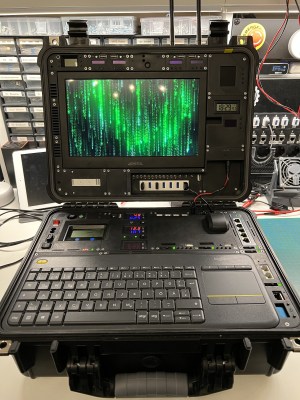
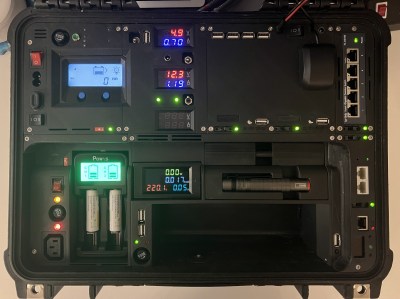
It might be easier to list the gadgets this build doesn’t feature, but some of the highlights include radios for 433/868 MHz and LoRaWAN, an RFID reader, GPS, a Bluetooth analyzer, a Geiger counter, an ADS-B receiver, environmental sensors, and a stripped-down Amazon Echo. There’s even a dedicated compartment for a Victorinox Cybertool Swiss Army knife — just in case you forgot your corkscrew back at your volcano lair.
Shiny
Most of the decks in this year’s contest took the rough and tumble approach to cyberpunk chic, which frankly makes sense given the way our actual future looks to be headed. But there’s always a chance things might turn around and head in the utopian Star Trek direction, in which case these aggressive designs simply won’t do. You need something clean and beautiful like PERSEUS-9 from [Mitsuru Yamada].

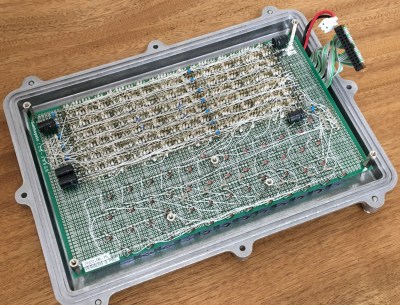
The aesthetics of the exterior are impressive enough, but a peek at the hand-wired internals shows a level of dedication that we can only dream of. In truth this build may have been higher up in the rankings if it wasn’t for the fact that it’s limited to a 6502 CPU and a 40 x 7 LED character display — though we imagine there’s some of you out there that would consider its reliance on retro hardware to be an advantage when the chips are really down.
Jacking In
Technically speaking, Gibson’s “cyberspace decks” weren’t meant to be traditional computers at all — they were a brain-linked gateway into a virtual reality world where hackers flew around like superheros. But that’s kinda hard to pull off on a Raspberry Pi, so for the time being the community is focused on building rad-looking enclosures and bolting weird gadgets to them. Not that we’re complaining, mind you.
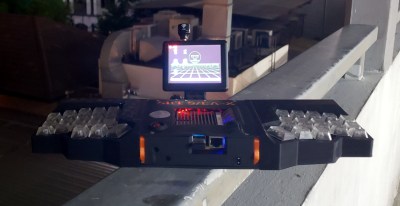
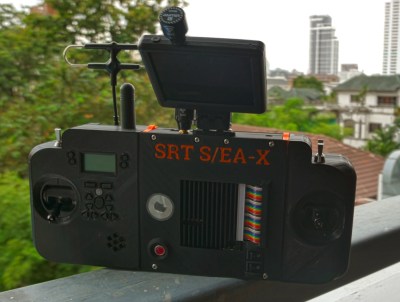
Still, somebody should be trying to push the state-of-the-art forward, and who better to do it than [Tinfoil_Haberdashery]. Like his previous designs, the S/EA-X Cyberdeck adopts an exploratory approach to custom computing. Thanks to its modular design, the functionality and physical size of the deck can be tailored to whatever the task at hand may be. That could mean connecting it to a pair of VR goggles and slapping an RC-style joystick on the side to simulate flying a quadcopter, or popping on the keyboard “wings” and using its onboard display when it’s time to knock out some code. The build is superbly documented, and we love the idea of using VGA 15-pin D-SUB connectors as a cheap and easy way to link the modules.
Long Live the Cyberdeck
It’s no exaggeration to say that judging this contest was one of the most difficult things we’ve had to do here at Hackaday in a long time. OK, granted we push buttons all day and don’t live particularly difficult lives in the first place, but you get the idea.
The competition was so fierce that it took over a week of internal debate just to get it down to the top 25. Unanimous agreement was impossible, and we’re willing to bet more than a few comments below will be questioning why their favorite build didn’t make the cut. The reality is that we had so many incredible entries, across so many different styles and ideologies, that selecting an impartial “best” is essentially impossible.
But one thing is clear — the cyberdeck movement is here to stay. What were once derided as little more than casemods have grown into some of the most impressive bespoke creations we’ve seen in years, thanks to a vibrant community of hackers and makers that have cropped up around the idea of building truly personal computers.
The Hackaday Cyberdeck Contest will return, it’s only a matter of when. So you better start brainstorming now, because if this is what the community comes up with on their first go around, we can’t imagine what it’s going to look like when they have more time to prepare.


0 Commentaires